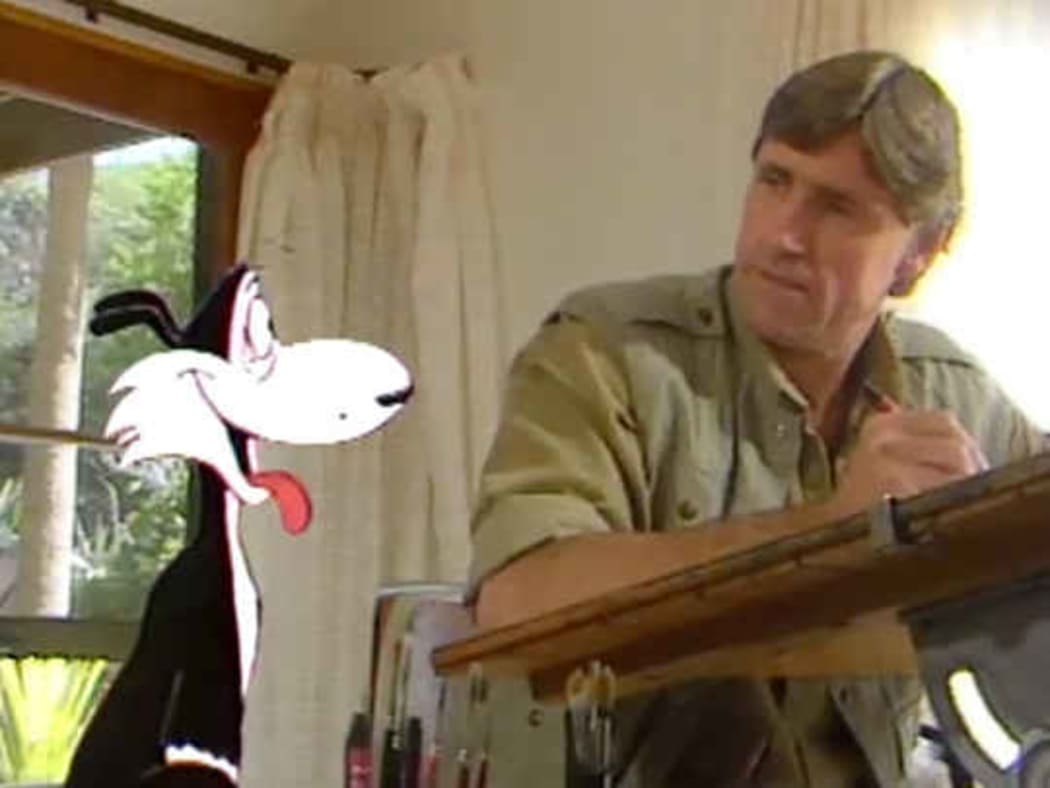Friends and colleagues have paid tribute to legendary cartoonist Murray Ball as a kind man with a strong social conscience.

Murray Ball at home in Gisborne, New Zealand. Tuesday September 17, 2007. Photo: Setford news photo agency
Ball died yesterday at the age of 78. He had suffered from Alzheimer's disease.
Though best known for his comic strip Footrot Flats, he was also a political cartoonist, author, film scriptwriter and director.
He took up cartooning as a reporter on The Manawatu Times, later moving to The Dominion in Wellington and then to Britain, where he worked for Punch and the Labour Weekly.
Long time friend Tom Scott met Ball almost 40 years ago at a gallery opening.
"I knew of him as a kid, growing up in the Manawatu. He was a cartoonist on the Manawatu Times, and his cartoons were just wonderful. They were vivid and stroppy, they weren't the kind of tired, sycophantic things that other cartoonists were doing.
"And I thought 'gosh he's from Feilding'. He was an inspiration to know you could come from Feilding and do stuff.
"Then he went to London and worked for Punch, the premier world humour magazine - and there was Murray doing this absolutely ferociously brilliant strip called Stanley the Paleolithic Hero. It was brilliant."
Disappointed with Thatcher's Britain, Ball returned to a farm near Gisborne, which became the backdrop for Footrot Flats. Set on a mythical New Zealand farm, it focused on the adventures of an always optimistic farm dog, his owner Wallace - or Wal - Footroot and various family members, neighbours and animals.
Ian F Grant, founder of the New Zealand cartoon archive, a collection of 50,000 cartoons housed at Wellington's Turnbull Library, said Footrot Flats was a very important social commentary. "Not just about the rural life but about human relationships and other things as well."
Tom Scott said the strip resonated with rural New Zealand. "For us, it provided a window for rural New Zealand to look into what they imagined was happening on farms.
"And the relationship between the Dog and Wal was absolutely fantastic.
Ball was also committed to social causes and having grown up in South Africa was passionately anti-apartheid.
When the controversial 1981 Springbok Tour took place he was a leading protester against it.
"My opinions were asked over these things and also as a cartoonist I expressed my view about it. Some of the trauma and the outrage I felt came out in the drawings. I hope they did," Murray Ball said in an RNZ interview.
Tom Scott said Ball's cartoons which were published in a weekly newspaper during that time, were very angry.
"Murray's so convivial and genial and Footrot Flats is so warm. Had he been doing them day after day I'm sure he would have had more of a safety valve but they ended up being detonations rather than hissing steam," he said.
His friend was also worried about the country's political direction, first under Rogernomics and then Ruth Richardson.
"He thought - correctly - that we were heading towards an unfairer society. The amount of people sleeping in cars right now and the polluted rivers, none of this would come as a surprise to Murray, who thought we were heading that way," he said.
Ian F Grant remembers Murray Ball as a special person.
"He was a quiet, unassuming sort of man but a very caring person who had very strong feelings about social justice and equality in life and in politics."
But the great question of Footrot Flats was never answered - even 24 years after he stopped drawing him - Murray Ball would not say what the dog's name was.
"I don't think he'd like that," Ball told RNZ. "I owe him that much."

Murray Ball and The Dog, in a documentary about the making of 1986 Footrot Flats film The Dog's Tale. Photo: Screenshot / NZ On Screen



